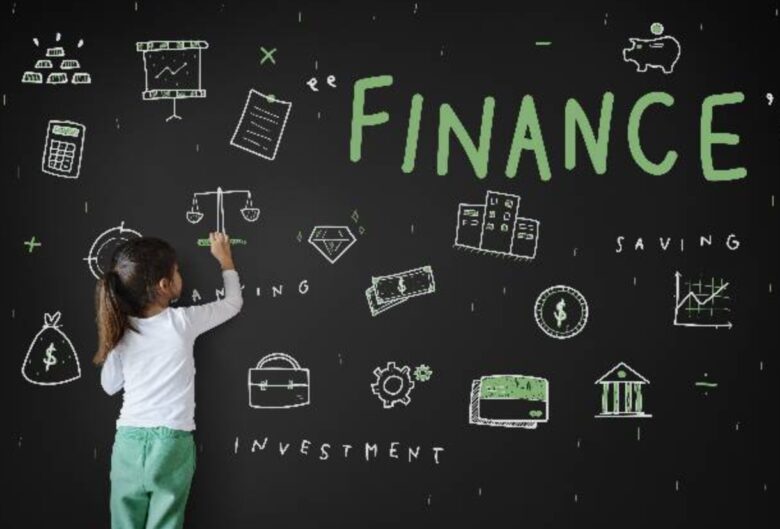Today, many students are navigating the world without any form of financial literacy. Financial education is about learning and understanding money, a life skill that empowers not just students but everyone, too, to make informed financial decisions.
This article will teach you more about financial literacy, exploring its impact on students and why it is necessary to introduce financial education in schools.
Contents
Why Financial Literacy in Schools Matters
The consequences of a financial knowledge gap can be profound. Because of that, students without financial education may stumble into pitfalls that could have been easily avoided. That’s why this topic should be in school first to help students with these:

Source: corporatefinanceinstitute.com
Empowering the Future Workforce
Financial literacy is the key to unlocking future success. Students who understand managing their finances are better equipped to navigate the professional world. A workforce where every individual can make good financial decisions leads to success not just on an individual level but for the economy as a whole.
Breaking the Cycle of Debt
Financial Education acts as a shield against debt. By learning about money from an early age, students are armed with the knowledge to avoid falling into the cycle of debt. Consider this: a teenager who understands the consequences of credit card misuse is less likely to face overwhelming debt in adulthood.
Real-World Applications
Understanding financial literacy goes beyond the classroom; it’s about applying practical skills to navigate life successfully.

Source: gohenry.com
Practical Skills for Life
Financial literacy isn’t confined to textbooks; it’s about gaining practical skills that can be applied in everyday life. These skills form the foundation for a secure financial future, from budgeting to saving. Financial literacy isn’t just a theoretical concept but a set of tools individuals can use to navigate various life situations successfully.
Life throws curveballs, and financial challenges are inevitable. Financial literacy equips students to face these challenges head-on, whether unexpected medical expenses or sudden job loss. By understanding financial management principles, students can develop resilience in financial adversity.
The Role of Schools in Financial Literacy
Schools are essential for academic learning and shaping practical life skills, including financial literacy. To fulfill this crucial role, schools must prioritize financial education by integrating it into the curriculum and providing comprehensive teacher training and support. Here are four key aspects emphasizing the crucial role schools play in fostering financial literacy:
1. Comprehensive Integration into the Curriculum

Source: servelearn.co
Teaching financial education at schools ensures that every student receives foundational knowledge in managing finances, establishing a framework for practical decision-making in their personal and professional lives.
2. Teacher Training Programs
Teachers are central to the effective delivery of financial education. That’s why establishing robust teacher training programs is very important. These programs should equip educators with the knowledge, tools, and strategies to effectively communicate financial concepts, ensuring students receive a practical education in managing their finances.
3. Enhancing Teaching Approach

Source: amle.org
Financial literacy education requires a unique teaching approach that engages students and makes the subject matter relatable. Schools should focus on developing innovative teaching methods, incorporating real-world examples, and creating interactive learning experiences. By doing so, educators can capture students’ interest and demonstrate the practical applications of financial knowledge.
4. Continuous Support and Professional Development
Recognizing that education is an evolving field, schools must provide continuous support and professional development opportunities for teachers involved in financial education. This ensures educators stay abreast of evolving financial landscapes, emerging educational technologies, and innovative teaching methodologies. Ongoing support contributes to the sustained effectiveness of financial education programs.
Challenges of Schools in Financial Literacy
While the importance of financial education is clear, the path to implementation is not without its challenges. Implementing financial literacy programs in schools encounters hurdles. Addressing these challenges head-on is important to ensuring financial education is integral to every student’s learning journey:
- Limited Resources
- Resistance from Traditional Structures
- Lack of Teacher Training
- Engagement and Relevance
- Assessment and Measurement
- Parental Involvement
The Broader Impact
The impact of financial literacy reaches far beyond individuals; it has a profound effect on societies and economies. This section explores the ripple effect of financial literacy on societal well-being and economic stability.

Source: covid19.sanantonio.gov
Beyond the Classroom
Financial literacy creates a ripple effect, positively influencing society and the economy. A financially literate population contributes to a healthier economy and a more financially secure society, reducing the burden on social welfare systems.
Fostering Economic Resilience
A financially literate population fosters economic resilience. Individuals equipped with financial knowledge make sound decisions, manage debt prudently, and contribute to the stability of financial institutions. This resilience mitigates the impact of economic downturns on a larger scale, emphasizing how financial literacy stabilizes societies.
Global Importance of Financial Education
Financial literacy is a global concern crucial for sustainable development. This delves into international efforts, emphasizing the shared responsibility of nations to prioritize financial education as a cornerstone for building resilient economies and empowered societies.
Empowering Individuals Globally
Financial literacy empowers individuals globally, contributing to global economic stability. Understanding the interconnectedness of financially literate individuals is pivotal in shaping a balanced and sustainable global economy.

Source: carolinapeds.com
Bridging Socioeconomic Disparities
Financial literacy is a tool for bridging socioeconomic disparities within and between nations. It fosters inclusivity, breaking down barriers to economic participation and promoting social and economic justice.
Be Financially Stable Today!
It’s essential to recognize that financial literacy isn’t just a checkbox in a curriculum; it’s a lifelong skill that shapes the future. Reinforcing the significance of financial literacy in schools helps build a society where everyone can make informed decisions about money and contribute to a brighter future for all.
